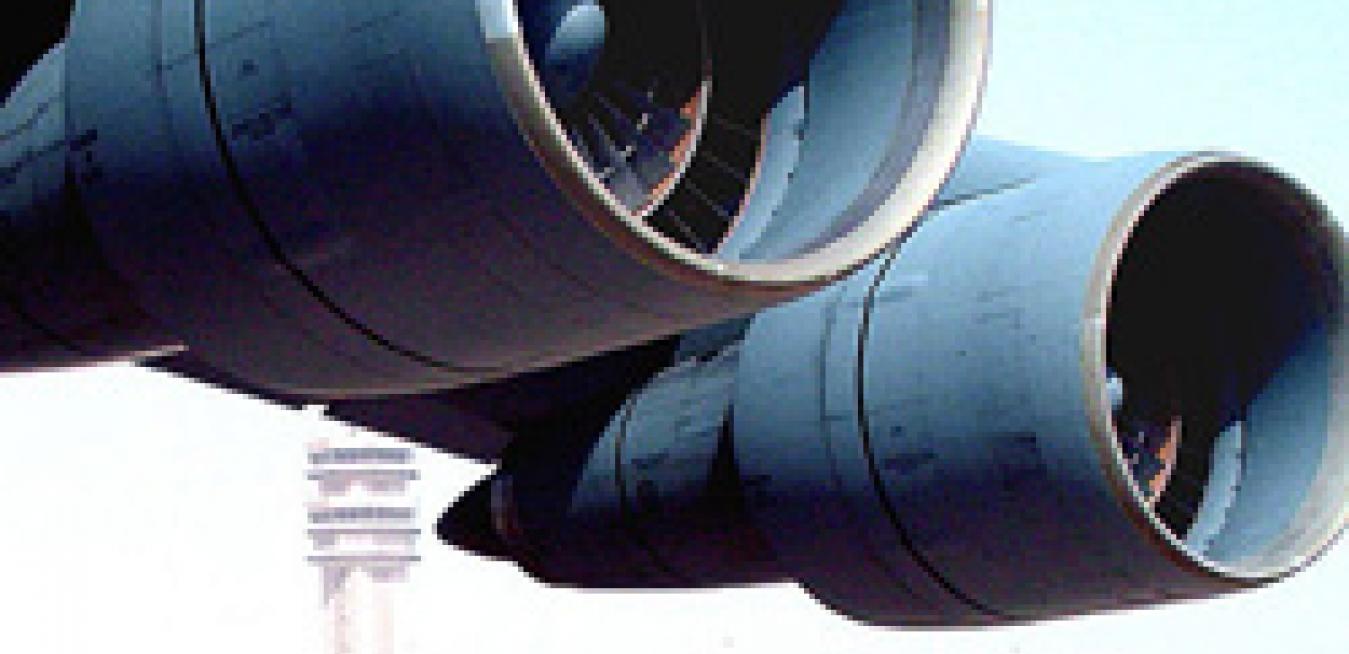It was the 1960s and the U.S. Air Force came to GE with a big problem. It had ordered from Lockheed a huge new cargo jet, the largest plane in the world in fact, and needed a jet engine that could match it and haul 50,000 tons of tanks, transporters and equipment 5,000 miles anywhere in the world at a clip of 500 miles per hour. Over the next few years GE engineers huddled with machinists and mechanics and came up with a revolutionary engine design that boosted thrust to record 40,000 pounds but also cut fuel burn by a quarter. The cargo plane, called C-5 Galaxy, was so massive that GE had to test the engines on a B-52 bomber, the closest jet in size. The Air Force received the first C-5 in 1969. The planes have since ferried troops and cargo in Vietnam, Iraq, Afghanistan, and will remain in service through 2040.
Larger than Life: Two airmen stand in the shade under the wing of a GE-powered C-5 Galaxy sitting on the runway at Baghdad International Airport.
But the Galaxy was only the beginning. Today, nearly all jet propelled passenger and cargo planes use the Galaxy’s groundbreaking engine design called high-bypass turbofan. The design has allowed airlines to fly more people farther, faster and with less fuel.
GE saw the commercial potential of the technology first and quickly built a passenger version on the Galaxy engine. That engine, called CF6, first flew in 1971 and workers at GE Aviation’s Evendale plant in Ohio are still building several every day. Today, the CF6 is the most common jet engine in the world. GE has delivered more than 7,000 of them to 250 airlines in 87 countries. More than two thirds of the engines still remain is service, powering all makes of planes, from Boeing 747 jumbos like the President’s Air Force One to Airbus long-haul jets and Beluga cargo lifters. The newest versions on the engine will still be flying in 2040, 70 years after it first one debuted.
GE is now applying the CF6 know-how to its latest and most advanced engines, GEnx and LEAP. GEnx, which started flying last year, is 15 percent more efficient than comparable engines in service today, produces 15 percent fewer CO2 emissions, and 30 percent less noise. New materials and design cut weight by hundreds of pounds and boosted thrust. Where the fan in the front of the CF6 engine needs 36 metal blades, GEnx employs half the number of blades manufactured from light-weight carbon fiber composites. As a result, GEnx-powered Boeing 787 Dreamliner recently set new distance and speed records on a round-the world flight.
The LEAP engine, which GE manufactures with France’s Snecma, is scheduled to take off in four years. It will have some parts made from light ceramic composites and others “printed” layer by layer by a new production method called additive manufacturing. “Four decades from now, we could be printing an entire engine this way,” says Michael Idelchik, vice president for advanced technologies at GE Global Research. That’s just in time to replace the last CF6 engine in service.





